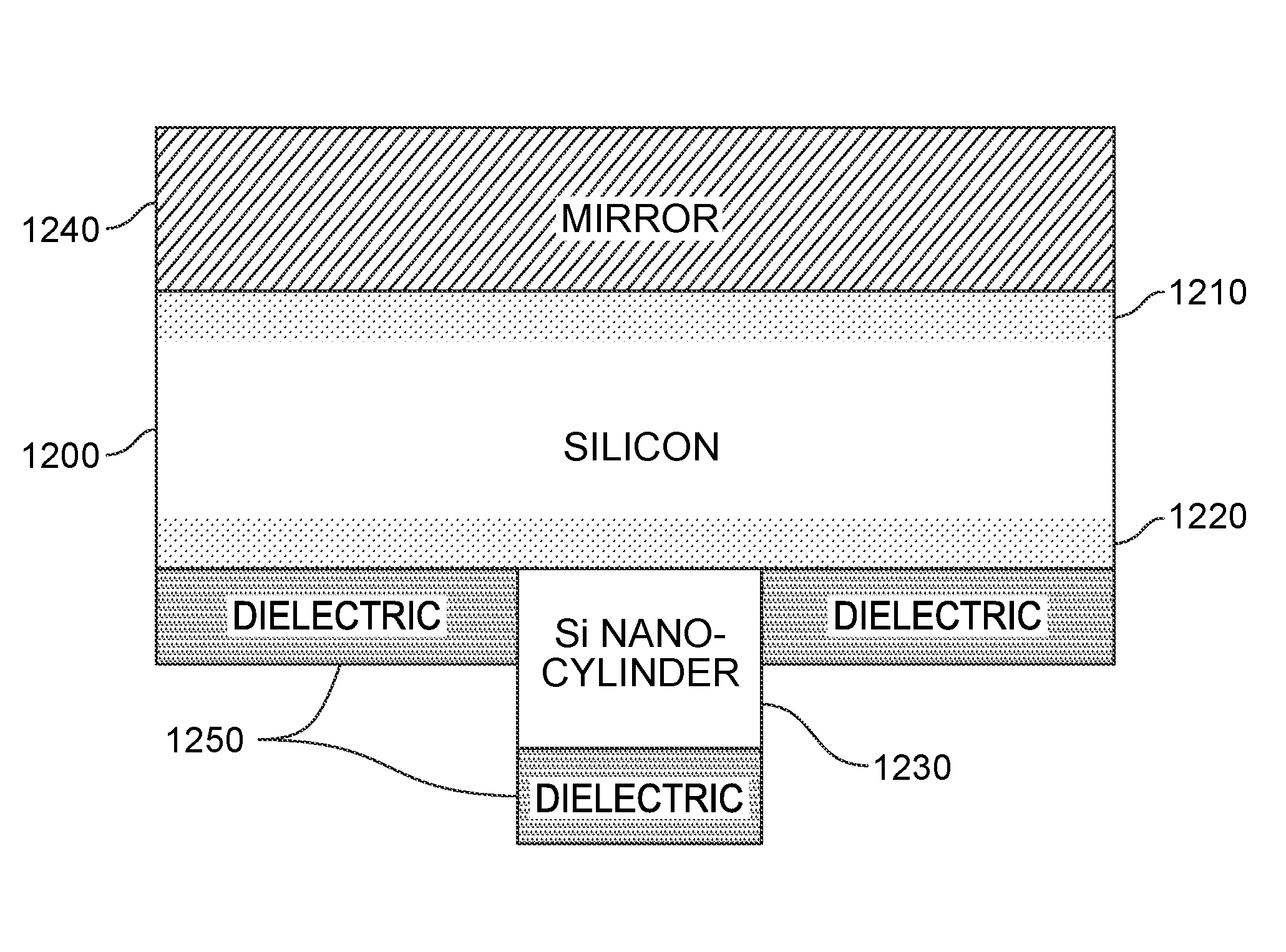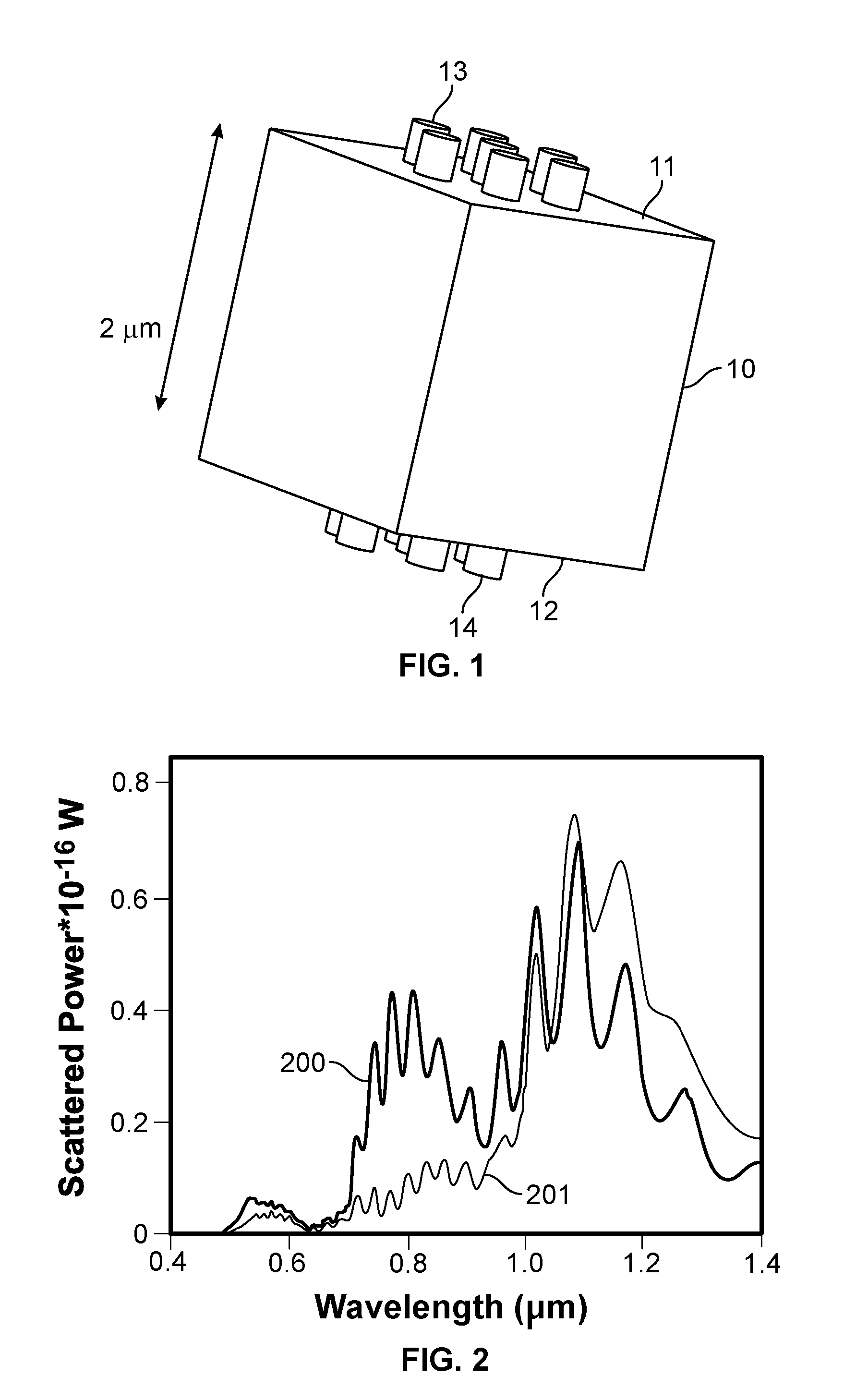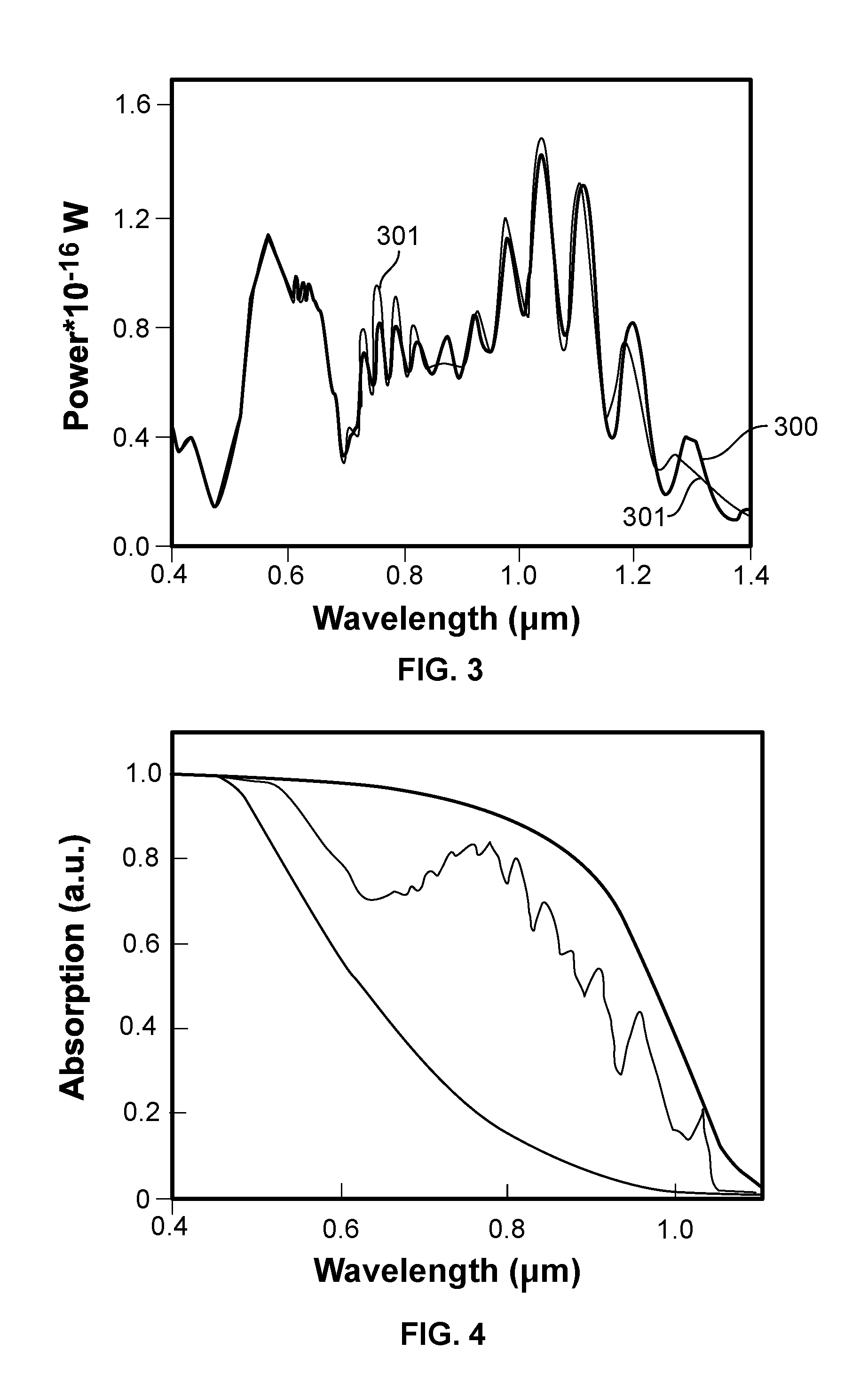Photovoltaic cell with light trapping for enhanced efficiency
a photovoltaic cell and light trapping technology, applied in the field of thin film photovoltaic cells, can solve the problems of limiting the range of applications for which photovoltaic cells are used, relative inefficiency of photovoltaic cells, etc., to achieve the effect of enhancing photovoltaic conversion efficiency, increasing the penetration of incident light, and increasing the total path length
- Summary
- Abstract
- Description
- Claims
- Application Information
AI Technical Summary
Benefits of technology
Problems solved by technology
Method used
Image
Examples
example i
[0056]We performed FDTD modeling as described above. Three scenarios were modeled as shown in FIG. 5: Scenario A was the isolated nanocylinder, Scenario B was the silicon film with front-surface nanocylinder impinged from air, and Scenario C was the silicon film with back-surface cylinder impinged from within the silicon film.
[0057]FIGS. 6-8 provide polar plots of the angular distribution of the scattered power at a resonance wavelength of 800 nm for scenarios A and B (FIGS. 6 and 7 respectively) and at a resonance wavelength of 900 nm for scenario C (FIG. 8). The source is polarized in one of the two principal directions.
[0058]The polar plot of the scattered power for scenario A at a wavelength of 800 nm clearly indicates electric dipole scattering characteristics.
[0059]It is important to note that for Scenarios B (wavelength at 800 nm) and C (wavelength at 900 nm), the resonances are hybrids of electric and magnetic dipole modes. They are not pure electric dipole modes as in Scena...
example ii
[0062]In an alternate embodiment, an array of nanocylinders is created on the front surface of the silicon layer. Instead of a back-surface nanocylinder array, a metallic mirror is created on the back surface of the silicon layer. In essence, the reflective image of the front-side antireflection array serves as the back-side trapping array.
[0063]This simplifies the fabrication process, since only one side of the photovoltaic cell needs to be patterned with nanostructures. Moreover, the metallic array, which may be made, e.g., from deposited silver or aluminum, can also be used for the back-side electrode.
[0064]We performed numerical simulations to predict the performance of such an arrangement. The simulated structure is illustrated in FIG. 12. As seen, the structure includes silicon layer 1200, which has a doped region 1210 near the back surface and an oppositely doped region 1220 near the front surface. One silicon nanocylinder 1230 is shown formed on the front surface of the sili...
PUM
 Login to View More
Login to View More Abstract
Description
Claims
Application Information
 Login to View More
Login to View More - R&D
- Intellectual Property
- Life Sciences
- Materials
- Tech Scout
- Unparalleled Data Quality
- Higher Quality Content
- 60% Fewer Hallucinations
Browse by: Latest US Patents, China's latest patents, Technical Efficacy Thesaurus, Application Domain, Technology Topic, Popular Technical Reports.
© 2025 PatSnap. All rights reserved.Legal|Privacy policy|Modern Slavery Act Transparency Statement|Sitemap|About US| Contact US: help@patsnap.com



